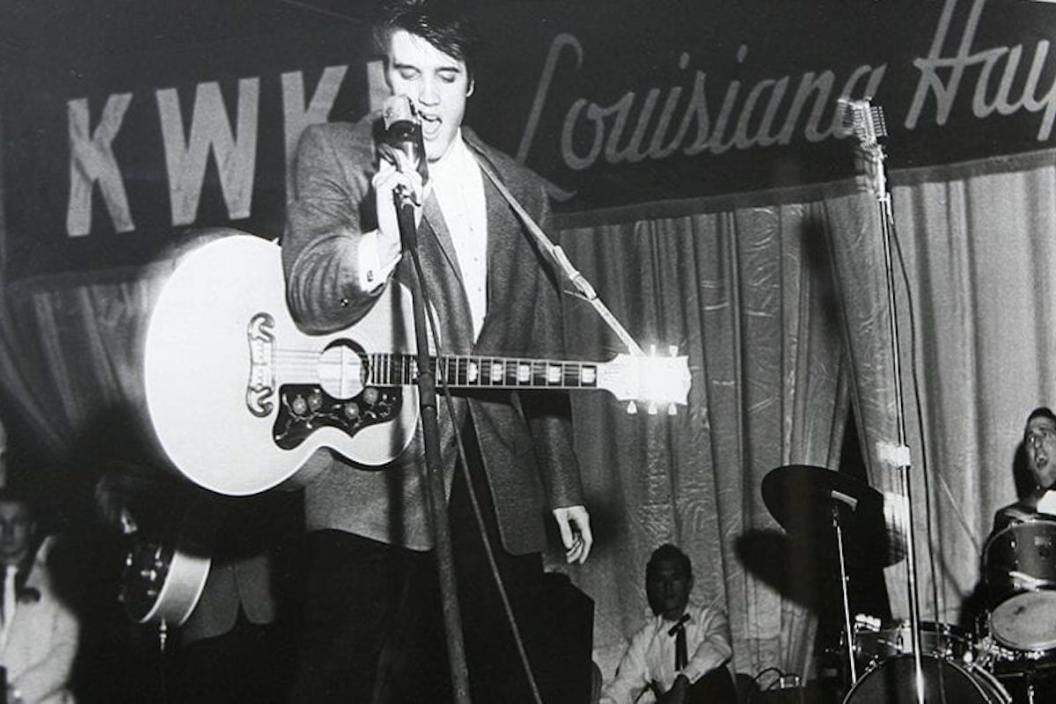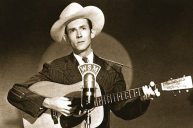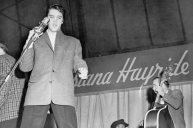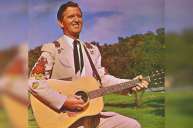In the late 1940s, live radio performances served as a primary means for country singers and bands to build a regional fan base. Success in a radio market allowed these artists to draw crowds for public appearances, where fans could purchase sheet music and records to further support their local heroes' livelihoods.
Videos by Wide Open Country
The famed Grand Ole Opry in Nashville wasn't the only program to expand the typical 15-minute radio show focusing on one singer or family into an evening's worth of entertainment. Starting with its April 3, 1948 debut broadcast on Shreveport's 50,000-watt KWKH radio station, the Louisiana Hayride helped launch the careers of numerous stars, including Hank Williams himself. Once television and teenage culture nearly killed off live country radio altogether, the Hayride transitioned to the small screen and helped crown the king of rock 'n' roll.
Cradle of the Stars
Program director and show emcee Horace Logan wisely avoided copying the Opry format too much. Instead of positioning itself as a direct rival, Shreveport's barn dance-style series became an unofficial feeder system for the show that made Nashville famous: Less as a desire to help another program and more because of the Hayride's well-earned nickname "Cradle of the Stars."
To fill three hours worth of short sets, the show welcomed lesser-known acts who might've been turned away by the Opry. It also allowed electric guitars before a lot of other radio stations embraced change. These decisions helped create a different-sounding program that stood out on the dial. Such alternative approaches impressed listeners with short attention spans and current tastes once the CBS Radio Network started airing a 30-minute version of the show on as many as 200 different stations.
Read More: Unearthed Live Recording of Hank Williams' 'Jambalya' Will Take You Back in Time
An absolute who's-who from the era also shared the Hayride stage, including Johnny Cash, George Jones, Webb Pierce, Faron Young, Jim Reeves, Johnny Horton and home state duo Doug and Rusty Kershaw.
Crowning a King in the Age of Television
In 1954, the Hayride offered a valuable opportunity to a young singer shunned by the Opry. This gamble led to weeks of memorable live broadcasts and eventually an early television appearance by the performer in question, Elvis Presley.
Presley's then-undefinable mix of R&B, country and gospel influences got a big boost by this partnership, introducing his music to both older country music fans and their impressionable children. The Elvis experiment went so well that Logan accidentally coined a familiar phrase while disarming a potential riot. As the Municipal Auditorium's newfound young audience got restless for an encore after a 1956 set by Presley, Logan had no choice but to declare that Elvis had left the building. In the years to come, Logan's plea became a celebratory closing statement associated with Presley's live show.
Despite the name being used at times for regional package tours and programming, the historic Louisiana Hayride's barn doors officially shuttered on August 27, 1960. Today, the show represents the role radio played in post-war country music. Future stars got exposure beyond regional touring and record sales, paving a smooth road from Shreveport to Nashville.
This story originally ran in 2018.




